1
Technical Antecedents: Origins of Still Photography and Cinema
Any discussion of cinema must begin with the inventions that led up to moving images.
The Camera Obscura is a technology that predates all camera technology. A box or dark tent is used to house the paper and the artist. A hole or lens is placed in the box or tent and the outside image is projected inside. This image can then be traced by the artist. History of Camera Obscura
Early Photography Pioneers

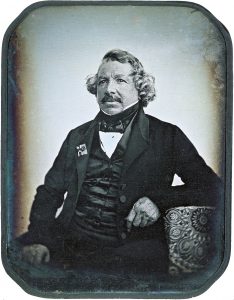
Two key figures Joseph Niepce and Louis Daguerre are essential to the development of photography. Sharing information but working separately the two men created two early photographic processes. Niepce invented the Heliograph which was a photo print made from a photoengraving process in 1825. Documents show that he had been working on creating a photographic process since about 1816.
Louis Daguerre another French inventor, invented a photographic process that would be known as the Daguerreotype. The process involved a thin silver plated copper sheet exposed to iodine crystal vapor. Through further experiments he perfected a process that could be duplicated by others and transformed the technology into a business. Due to long exposure times, most images are portraits or still life. The technology was improved upon by many eventually giving us the popular ambrotype, tin type and later, photos printed on paper, which was an invention of William Talbot. The popularity of photography led to a new trend of photographing the dead. It was not uncommon to bring in a photographer to make an image of a dead infant, or other deceased family members. Such a concept is a freakishly foreign idea to us today.
Early Moving Image Pioneers
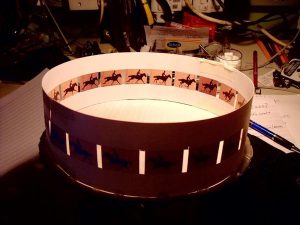
Zoetropes predate film animation and motion pictures by displaying a sequence of drawings in motion. The images are inside of a cylinder with a light, when the cylinder is spun the images appear to be in motion.
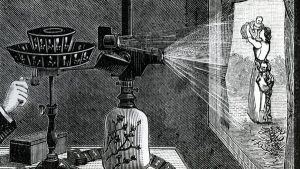
Magic Lantern shows or phantasmagoria were invented by Etiene Robert. A translucent screen was placed between the audience and the a series of projectors which displayed images that overlapped each other.
In the 1870s the praxinoscope was developed by Emile Reynaud. This device allowed a strip of drawings to be projected.
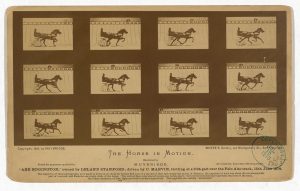
Edward Muybridge is essential to the process of motion pictures because of his work in stop motion. Muybridge was obsessed with the idea of animal motion and used multiple cameras and multiple exposures to show how animals moved. He created the zoopraxiscope, which was an early form of projecting moving images.
One of the most important but lesser known names in photography and cinema is Hannibal Goodwin. Goodwin was a minister who wanted a way to put photos of bible stories in the bibles of his parishioners. He created nitrocellulose film in the 1870’s and applied for a patent for roll film in 1887 around the same time that George Eastman was creating his process. Goodwin sued Eastman Kodak for patent infringement and won 5 million dollars. Goodwin was killed in a streetcar accident in 1900. A key thing to remember about early film is that it was highly flammable and can even burn under water.
Eastman introduced the Kodak camera in 1888 which led to rolls of film becoming the predominant way of taking and printing photographs. This invention would lead to the invention of Motion Pictures.
The next stage in the creation of motion pictures can be controversial and it depends on what accounts you read. Thomas Alva Edison had employees working on a motion picture camera. William Kennedy Laurie Dickson, an Edison employee created the Kinetograph in 1891.
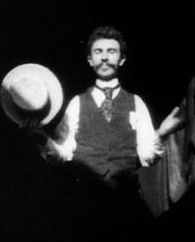
This technology used a sprocket system to advance the film through the camera. The eventual end product led to the kinetoscope for viewing films. Around the same time, Auguste and Louis Lumiere were creating motion picture technology in France. American cinema history usually gives credit to Edison, when it should have been Dickson. Outside of the United States, the Lumiere brothers are often credited with motion picture invention. The brothers had to create their own camera technology and their own projectors, both were hand cranked and played back at about 16 frames per second. Early films include Workers Leaving the Factory and Arrival of Train. Audiences who were just becoming accustomed to photography had never seen such magical technology as motion pictures. There are accounts of audience members being terrified thinking that the train would run them down. It’s laughable today, but imagine if I snapped my fingers and teleported you across the room…that would be the equivalent advancement in technology and you would probably be quite surprised.
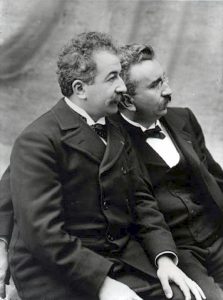
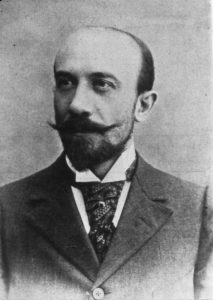
One of the most important figures in early cinema is George Melies. Melies had been a magician and theatrical performer and was intrigued by the Lumiere cameras, he even attempted to buy one. When he was refused, he designed and built his own camera and projector. He began shooting similar films as the Lumiere brothers, but quickly realized the power of cinema. He figured you could make one film of a theater performance, copy it hundreds of times and show it around the world—Melies was essentially inventing movie distribution. Melies invented most early cinema editing techniques such as dissolves, stop motion, substitution splice and he was a big fan of coloring his prints. He would hand paint each frame in a film so that when projected, the audience would see color rather than black and white. His most famous film is La Voyage dans la lune (A Trip to The Moon). The film industry passed Melies and he died nearly penniless in a home for artists. The documentary The Melies Mystery is a fascinating look at how Melies preserved his films and fought off the theft of his work by Thomas Edison. Below are the films that you should watch with this chapter.
The first film is by August and Louis Lumiere and one of their first camera experiments. These films were referred to as “actualities”. This film shows workers leaving the Lumiere Factory.
The second Lumiere Brothers film Arrival of a Train, is famous for frightening audiences. I often refer to it as the first horror film.
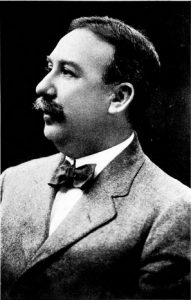
The Edison Company produced many films and their most famous director was Edwin S. Porter who was an Edison Engineer. Porter directed Life of an American Fireman and The Great Train Robbery among others. Porter is often referred to as the first director to edit scenes together to tell a story, but Melies was doing this at the same time. Porter did not stick with filmmaking and went back to working as an engineer. One thing that is interesting about this film is the level of violence. Modern films are often cited as being too violent and contributing to public violence, but it is clear that films were violent from the start.
This is The Great Train Robbery directed by Porter. Notice the early special effects like substitution splicing..
George Melies films were far ahead of his contemporaries in terms of editing and special effects. This version of the film A. trip to the Moon is hand colored.
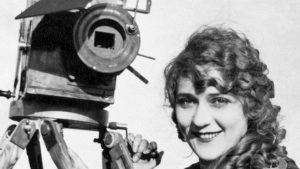
Alice Guy-Blache is known to be the first female filmmaker. She began making films soon after the Lumiere brothers debuted their camera and projections systems. Guy-Blache experimented with several sound and color system and you can see an early Phonoscene film here.
She continued to make films and moved to Hollywood, her career as a filmmaker ended around 1922.
As the basic building blocks of cinema were complete, motion pictures quickly became an industry that led to construction of theaters, studios and systems of star and talent management around the world.

